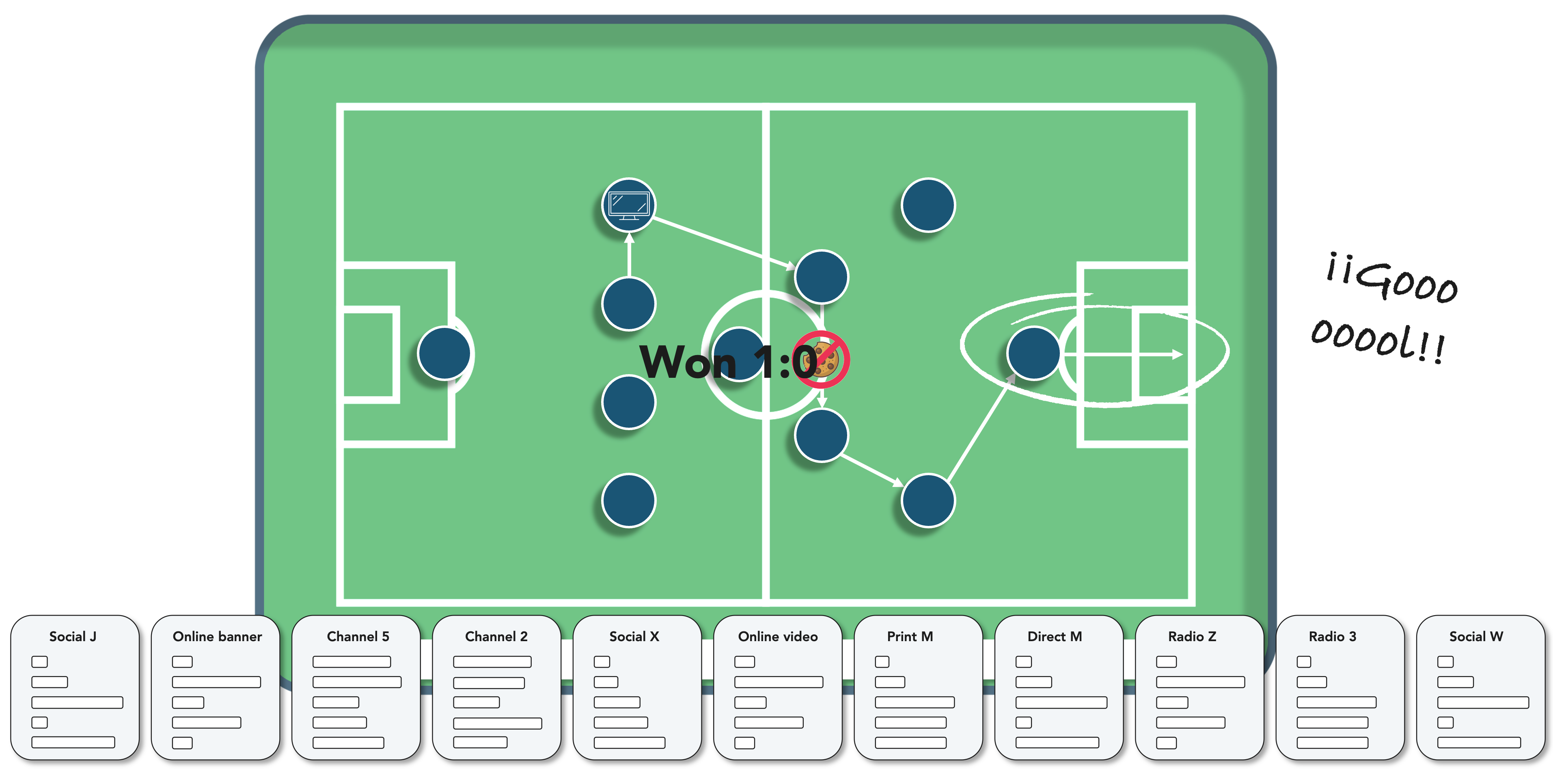Part 1: Introduction to MMM
What is Marketing Mix Modeling and how it has developed over the years

Introduction to MMM
Lesson 1.1 - What is Marketing Mix Modeling
In this lesson (4:27)
- What is Marketing Mix Modeling (MMM)
- How MMM is different to other marketing measurement tools
- How MMM works in a nutshell
Marketing Mix Modeling in a nutshell
Marketing mix modeling is a statistical method that helps companies determine how their different marketing activities affect their sales, profits, and website traffic.
By analyzing data over time, MMM creates a model that accurately reflects the effectiveness of various marketing tactics.
In simpler terms, MMM helps companies make informed decisions on how to best use their marketing resources for maximum return on investment.

What do MMM and Football have in common?
The difference between MMM and attribution modeling can be explained through a practical example of football.
Last-touch attribution, which surprisingly many measurement tools are still based on, assigns all of the credit to the player who scored the goal.
Another option is to assign credit to all of the players that “touched the ball” before the goal. This can be challenging as certain players might not leave a traceable footprint with their actions, and some passes can’t be tracked anymore as we’re losing third-party cookies.
MMM analyses a wider selection of variables over multiple games and seasons to learn how different activities actually correlate with goals, wins and losses.
Like a football team, where each player contributes to the success of the team, marketing activities work together to achieve the desired outcome.

How does MMM work in a nutshell
MMM works by analyzing a wide range of variables over multiple games and seasons to identify the impact of different marketing activities on sales, profit, and website traffic. This approach takes an iterative approach to data collection, model training, and testing. MMM typically involves the following steps:
- Data collection: Collecting data from multiple sources, including internal and external data sources, to capture a wide range of variables that could impact sales, profit, and website traffic.
- Model development: Developing a statistical model that accurately reflects the effectiveness of various marketing tactics based on the data collected. The model uses time series analysis to identify the correlation between different marketing activities and the incremental uplifts.
- Model training: Using a portion of the collected data to train the model, ensuring that it can accurately predict the impact of different marketing activities on sales, profit, and website traffic.
- Model testing: Using another portion of the collected data to test the model's accuracy, comparing predicted results against actual results.
- Refinement: Refining the model based on the results of the testing process and incorporating any relevant external factors, such as weather and seasonality data.
